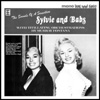 After years of hearing about the mythical NWW but never actually hearing them, I finally broke down and ordered this album (then an expensive import) when I was 19. Despite the kitschy title and cover art, I was still completely caught off-guard by the cartoonish and self-indulgently absurd music within and immediately dismissed it as something so dreadful that probably only a Zappa fan could like it (I remember trading it to a used record store for a Carcass album or something later that same week). Many years later, with a somewhat broader mind and some increased context, I decided to give it another chance.  I still find it cartoonish and willfully annoying, but it's also kind of crazily inspired.
After years of hearing about the mythical NWW but never actually hearing them, I finally broke down and ordered this album (then an expensive import) when I was 19. Despite the kitschy title and cover art, I was still completely caught off-guard by the cartoonish and self-indulgently absurd music within and immediately dismissed it as something so dreadful that probably only a Zappa fan could like it (I remember trading it to a used record store for a Carcass album or something later that same week). Many years later, with a somewhat broader mind and some increased context, I decided to give it another chance.  I still find it cartoonish and willfully annoying, but it's also kind of crazily inspired.
Untied Diaries
The scene that Sylvie & Babs most consistently evokes for me is this: I’m at a somewhat upscale party in the 1960s.I’m dressed (quite suavely) in a tuxedo, sitting at a table in a shadowy corner sipping a martini while watching happy couples dance.About halfway through my drink, the room begins to swirl and the sounds of the party around me begin to warp and bleed together and I realize that I have been poisoned.As I slump from my chair and consciousness ebbs, everything around me becomes increasingly hallucinatory and fractured.As I fade further, my increasingly misfiring synapses begin to trigger all kinds of irrational memories and nonsensical impressions, ranging from chicken commercials to Frank Sinatra to the goddamn "Dragnet" theme.Then it all goes black. End of album.
My original (and current) impression of this album was that Stephen Stapleton just cobbled together a bunch of discarded snatches of unrelated recording sessions and unified them after the fact with a previously thought-up fictitious big band concept.The "big band" in this case being The Murray Fontana Orchestra.Given the improbable size of the "orchestra" (almost fifty members, including folks like Edward Ka-Spel, pre-Foetus Jim Thirlwell, and William Bennett), it seems pretty unlikely that the album was pieced together entirely from actual "Sylvie and Babs sessions."More likely, Stephen just looked around his studio one day and started incorporating bits of stuff that he liked into his current work from the mountains of tapes surrounding him, both from his own work and from various formal and informal collaborations (cannibalizing 1984’s Nylon Coverin’ Body Smotherin’ EP in particular).Of course, it is fun to imagine that there were actual full-band sessions and that dozens of underground musicians and artists descended on Stapleton's studio en masse for the explicit purpose of making a surrealist tribute to the Rat Pack era and that he then hacked the resultant recordings into unrecognizable, disjointed oblivion.
Regardless of how it all actually unfolded, the album was originally intended as a perverse collage plundered from samples of much-maligned ‘50s easy listening and exotica.Stapleton spent a lot of time scouring used record stores for raw material, but ultimately wound up using very little of it (though "The Monster Mash" makes a conspicuous appearance).Instead, the final product seems to be a disorienting mixture of seemingly random samples of commercials and songs, deranged off-key recreations of various standards, anachronistic field recordings (jackhammers, pigs, etc.) and general NWW studio detritus.This is a very much an "everything but the kitchen sink" album: somewhere along the three-year recording process, Stephen decided to abandon thematic consistency in favor of just tossing in literally anything that amused him.
Yet somehow it all seems to work: many people have incorporated Dadaist absurdity and surrealist jump-cuts into their music in the 25 years since this album’s release, but no one has quite managed to shape them into such an oddly mesmerizing flow as Stapleton has here.Whether he threw all the elements together randomly, intuitively, or according to the rules of some mischievous surrealist game, it is obvious that Stephen cared about the material and sincerely wanted to make a good album rather than mere dumping ground for odds and ends.It must have been an extremely long and frustrating endeavor to hack and sculpt the massive, jumbled mess into something (relatively) coherent using early ‘80s recording technology, but he managed to pull it off to quite an impressive degree.
While a bit primitive and half-baked when compared to more fully realized later works like Soliloquy for Lilith, Sylvie and Babs is nevertheless one of the most memorable, playful, and fascinating albums in the NWW oeuvre (though a decidedly unrepresentative one).The sped-up classical music and "Dragnet" snippets still strike me as a bit stupid and overly slapstick, but they also serve to show a side of NWW that has seldom surfaced since.It may be a bit flabby and unfocused at times, but few (if any) other artists could’ve woven capricious contrarianism, low humor, bad puns, endless non-sequiturs, and chaos into such a satisfying whole.
Samples:
 
 
Read More

